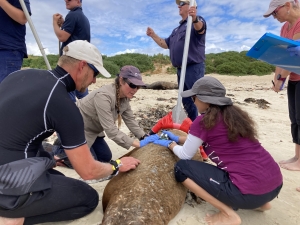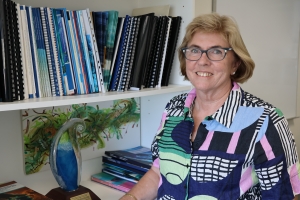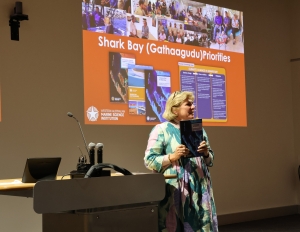Ground breaking data sharing project to better inform environmental assessments
A ground breaking project, to securely share data from industry, academia and government and better inform environmental approval processes, has been launched in Perth this morning by Western Australian Science Minister Stephen Dawson.
The Shared Environmental Analytics Facility (SEAF), which now has pilot programs in Cockburn Sound and the Pilbara, takes data from a broad range of sources to support environmental impact assessments and to create useful products such as maps, reports and forecasting tools.
SEAF was developed by The Western Australian Biodiversity Science Institute (WABSI) and the Western Australian Marine Science Institution (WAMSI), which have been joined by the National Collaborative Research Infrastructure Strategy (NCRIS) funded Australian Research Data Commons (ARDC) for the next stage of the program.
WABSI CEO Professor Owen Nevin said it was an exciting project that met a local and global demand for more information about cumulative pressures on the environment.
“The key benefit of SEAF is that it unlocks the real value of environmental information available. It transforms science and shared data into useable tools, enabling decision-makers from industry, government and regulators to make more robust, repeatable and sustainable decisions,” Professor Nevin said.
The two pilot studies in Western Australia have been broadly supported by industries in the regions.
WAMSI CEO Dr Luke Twomey said it was important to help decision makers by consolidating as much scientific information as possible in areas where a population was having an impact on the marine environment and landscape.
This ultimately would inform important decisions.
“The pilot studies are a significant way of demonstrating that we can securely share the results of research across different sectors,” Dr Twomey said.
ARDC CEO Rosie Hicks said, “This is a smart new way of sharing information with good governance and strong IT protections to help regulators and industry make better decisions.”
Science Minister Stephen Dawson commended the collaboration and commitment by WABSI and WAMSI to create and develop their Data and Information Management Program.
“This is a world leading innovation research project being progressed in Western Australia that can dramatically change the way environmental approvals and assessments are prepared and progressed using the latest digital data available,” Minister Dawson said.
“The project can be a game changer for government, industries, regulators and the private sector in sourcing reliable, consistent and easy to access environmental information as part of their decision-making processes.”
“I have been lucky enough to be involved in the development of this ground breaking project for a number of years and I am very pleased these pilot projects in the Cockburn Sound and the Pilbara are being launched and progressed,” Minister Dawson said.
“Our government has invested significantly in bringing this project to fruition and this milestone is another example of how we’re supporting and advancing scientific research and innovation to enhance biodiversity outcomes for WA.”
Protections around accessing the data will work in a similar way to the sharing of health data, where there are access restrictions around confidentiality.
Environmental Protection Authority (EPA) Deputy Chair Lee McIntosh said a shared mechanism for consolidating and interpreting environmental data would be a very valuable tool for environmental impact assessment.
“The EPA welcomes any initiative that helps deliver protection and good environmental outcomes for our State’s significant assets,” Ms McIntosh said.
“I particularly look forward to this collaboration improving our understanding of cumulative impacts through well managed biodiversity data.”
You can find more information at the SEAF website: www.seaf.org.au



